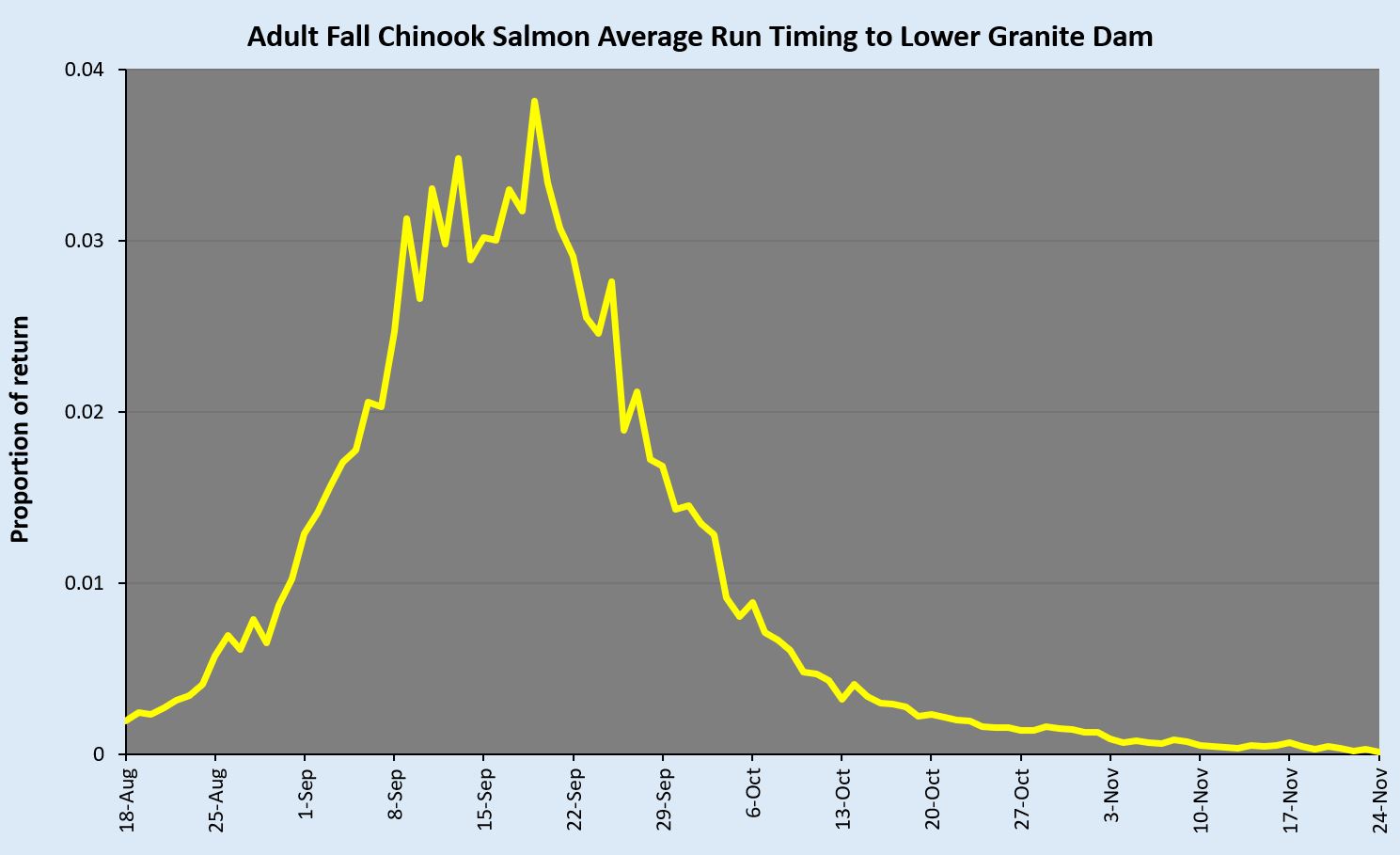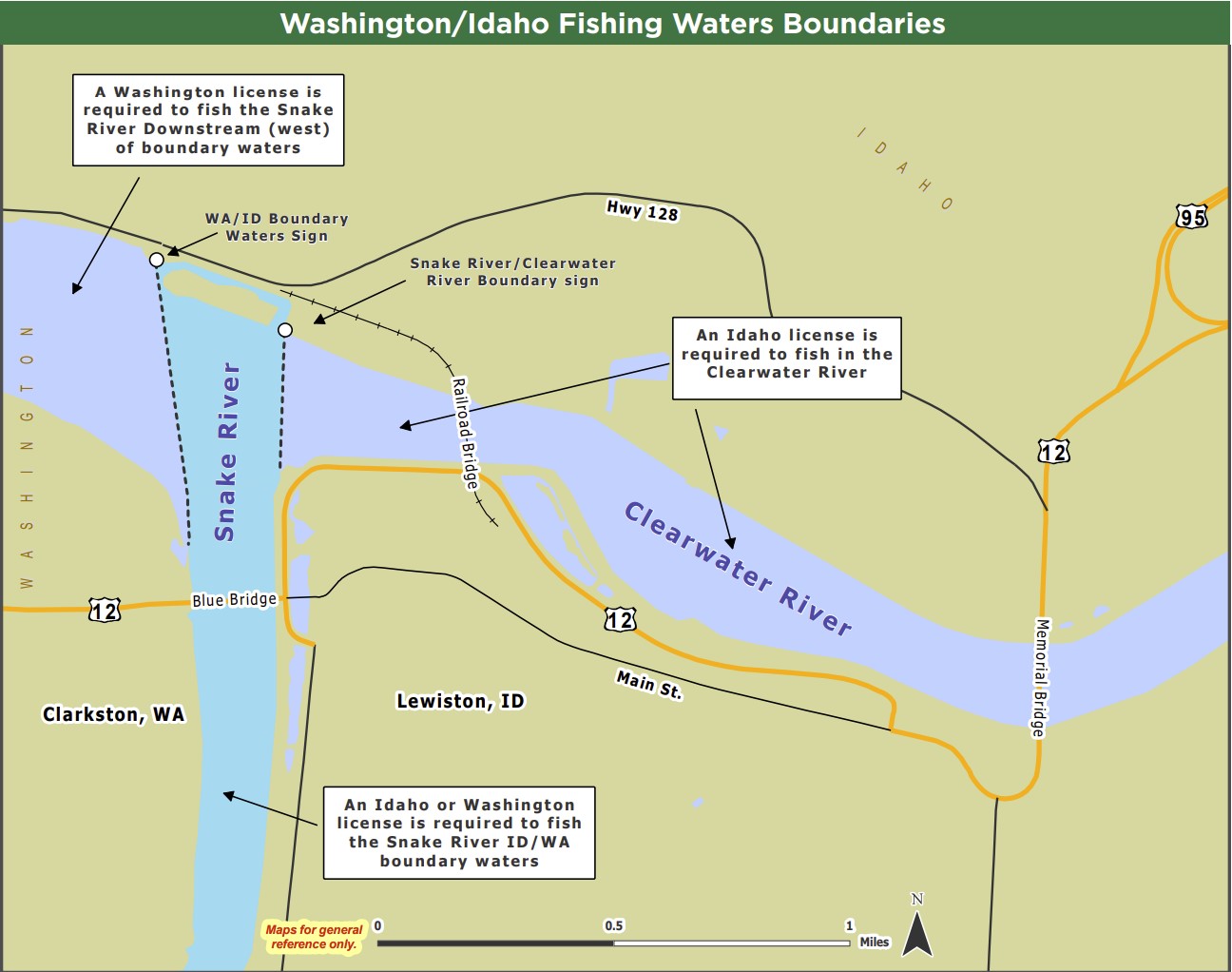Idaho’s fall Chinook Salmon season opened on August 18, and the Coho Salmon season starts on September 1. So, I figured I better put out an update to let people know what is going on with these fisheries. In this update, I will try to answer the questions people have been asking most frequently including what are the runs looking like, what percent of the runs are being trapped at Lower Granite Dam for broodstock, and what fishing rules do you need to follow if you have both an Idaho and Washington fishing license and would like to fish the boundary waters and/or both states during the same day.
FALL CHINOOK SALMON
Run Status
Fall Chinook “officially” started passing over Lower Granite Dam on August 18, which means we don’t have a lot to go on to evaluate how this year’s return is progressing. However, I have provided the figure below that shows how the 2024 preseason forecast (bars furthest to right) compares to previous year’s returns. This forecast suggests that this year’s return will be less than the previous four years, but still enough to provide good fishing opportunities.





